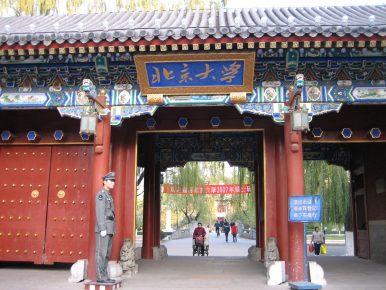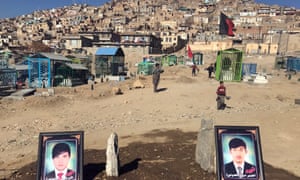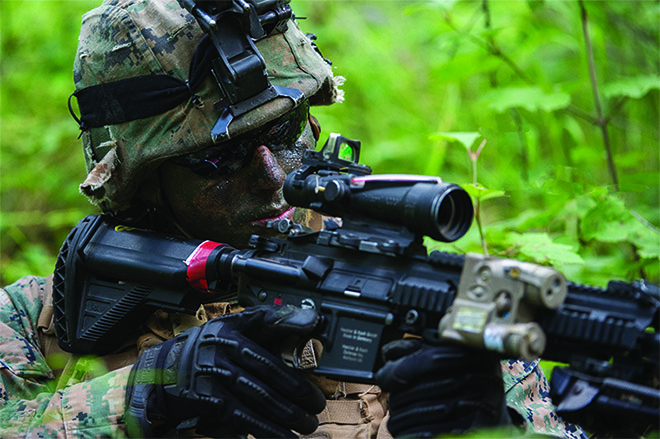PLA REVIEW OF ‘WORLD MILITARY SITUATION’
-- Maj Gen P K Mallick, VSM(Retd)
It is very important to understand, what Captain Sir B. H. Liddell Hart had said, the "Other Side of the Hill" thinks.
We must see how the Chinese look at the world events of last year.
Lin Zhiyuan, the deputy director of the Foreign Military Branch of the Institute of War under the PLA Academy of Military Science wrote a paper on Overview of world military situations in 2017 in China Military Online.
Here is the Chinese observations on World Military Situation.
The world landscape has changed at a faster pace in 2017. Inter-power cooperation and competition coexisted, with the latter becoming more prominent. Major countries paid more attention to contention for regional dominance, for buffer zones and “strategic strongholds”, and for emerging fields. But be it confrontation or standoff, all sides remained restrained below the traditional “threshold of war”.
Some countries, while focusing on the “gray zone” contest, updated their military theories and developed disruptive technologies and equipment to improve cross-field combat strength and prepare for winning the “high-end conflicts” in the future.
China’s military has increasingly become a staunch force safeguarding world peace.
China announced in September the completion of registration for an 8,000-strong peacekeeping standby force in the United Nations, which covered 10 professional categories in urgent need for United Nations peacekeeping tasks, such as army, navy, air force and medical support units. The troop is expected to be organized into peacekeeping troop units as per the invitation of the United Nations for overseas missions.
The hospital ship “Peace Ark” of the Chinese People’s Liberation Army (PLA) Navy visited Angola for the first time in October. During its port-visit there, the ship saw a 100-meter queue at the pier formed by visiting patients every day.
The 28th Chinese naval escort taskforce has started to take on escort missions in the Gulf of Aden and waters off the Somali coast in December. Since the first escort mission in 2008, Chinese escort taskforces have rescued, picked up and helped more than 60 Chinese and foreign ships in trouble, and verified and expelled around 3,000 suspected pirate ships.
Contests among great powers and geopolitical rivalries got bitter. But all parties stressed using “hybrid war” means to cultivate a strategic posture in their own favor, which managed to sustain the strategic balance.
The Trump administration stressed “America first” and the determination of restoration of America’s global leadership. Its national security strategy returned to traditional geopolitical gambling with major powers and Trump positioned China and Russia as “strategic competitors”.
The US military continued to reinforce its front-line deployment and launched four “freedom of navigation” vessel sailing operations in the South China Sea in the year. These moves fully exhibit the US government’s Cold War mentality.
Eyeing to “restore the dominance of the world”, Russia placed more emphasis on flexibly employing military power to gain strategic benefits. Russia’s military operations in Syria have successfully shifted the concerns of the United States and other western countries on the Ukrainian issue, consolidated the status of Bashar al-Assad’s regime and fundamentally changed the strategic containment on Russia.
The United States used NATO to keep squeezing the strategic survival space for Russia and enhanced troop deployment against Russia. As a result, the United States and Russia have been mired in structural antagonism with intensified tensions. There are no signs of a thaw in their relations.
Shinzo Abe’s government in Japan, relying on the United States, continued to create troubles on such issues as the Diaoyu Islands and the South China Sea.
In short, great powers paid more attention to long-term military competition this year. They scrambled for regional presence and discourse power. They sought ground for military operations and stopped before going too far to avoid head-on conflicts.
Hot and knotty issues continued but within a controllable range. The issues were eased to some extent through political negotiations and compromise.
Two major issues have challenged regional security and stability in the year. First, the Syria issue, which, to a certain extent, can be regarded as a “war of agents” between Russia and the United States. The year-end turnabout of the war situation provided an opportunity for a political solution to the issues.
Second, DPRK’s nuclear issue. After Trump came into power, he explicitly asserted to put an end to the “strategic patience” policy, and highlighted military deterrence as evidenced by the repeated escalation of US-ROK joint exercises.
The DPRK responded with an even tougher attitude to the toughness of the United States and ROK. The risk of chaos and war on the Korean peninsula increased dramatically.
Anti-terrorism fights reaped important progress, but terrorist threats were still spreading. The international community faces a new round of challenges.
The Islamic State, entrenched in Syria and Iraq for many years, retreated in defeat again and again, with vast areas of land lost and military might severely weakened and dispersed, under joint attacks by the United States and Russia, among other countries. However, the global anti-terrorism effect was not obvious overall.
Islamic State will probably linger on for many years as a terrorist organization. Some of its members will hide underground fighting in Syria and Iraq. Some foreign “holy warriors” may secretly return to their home countries or move to Africa to carry out “lone wolf” terrorist attacks.
It needs the international community to establish and improve the anti-terrorism cooperation system to aid the international fight against terrorism and to eradicate the conditions that breed terrorism.
Some countries promoted plans to “build up” or “expand” military forces in active preparation for winning the information-based and intelligent wars of the future.
The Trump administration pursued “force to promote peace”, and proposed to rebuild the U.S. military and expand its scale.
The U.S. recently signed a defense authorization bill involving a value of nearly $700 billion, continued to expand nuclear arsenals, and comprehensively enhanced the “Trinity” global strike capability. It also stressed the development of unmanned systems and artificial intelligence to ensure the military technical superiority.
Trump also put forward the “multi-domain warfare” concept and re-designed future wars. The U.S. Congress demanded that a major reform of “national security space” be carried out to create conditions for the formation of an independent “space force” in the future.
Russia stepped up its armament construction following asymmetrical thinking and is about to issue a new edition of the State Armaments Program. Russia plans to spend $320 billion focusing on the development of a nuclear deterrent system, with special attention paid to high-precision weapons and hypersonic and laser weapons.
Japan’s military spending increased for five consecutive years with a focus on strengthening naval and air forces in the “southwest areas”. India emphasized joint operations of the army, navy and air force and is now transforming to a network-centered army building and combat mode.
It is evident that outdated ways of thinking, such as the Cold War mentality and the zero-sum game, remained flourishing in 2017. At the same time, all countries vied for the development of new military technologies.
Technology and philosophy are in fact very close to each other. For old conceptions, such as the Cold War mentality, advanced technologies can be an “accomplice”. But for new concepts of peace maintenance and others, technology can also play a catalytic role.











